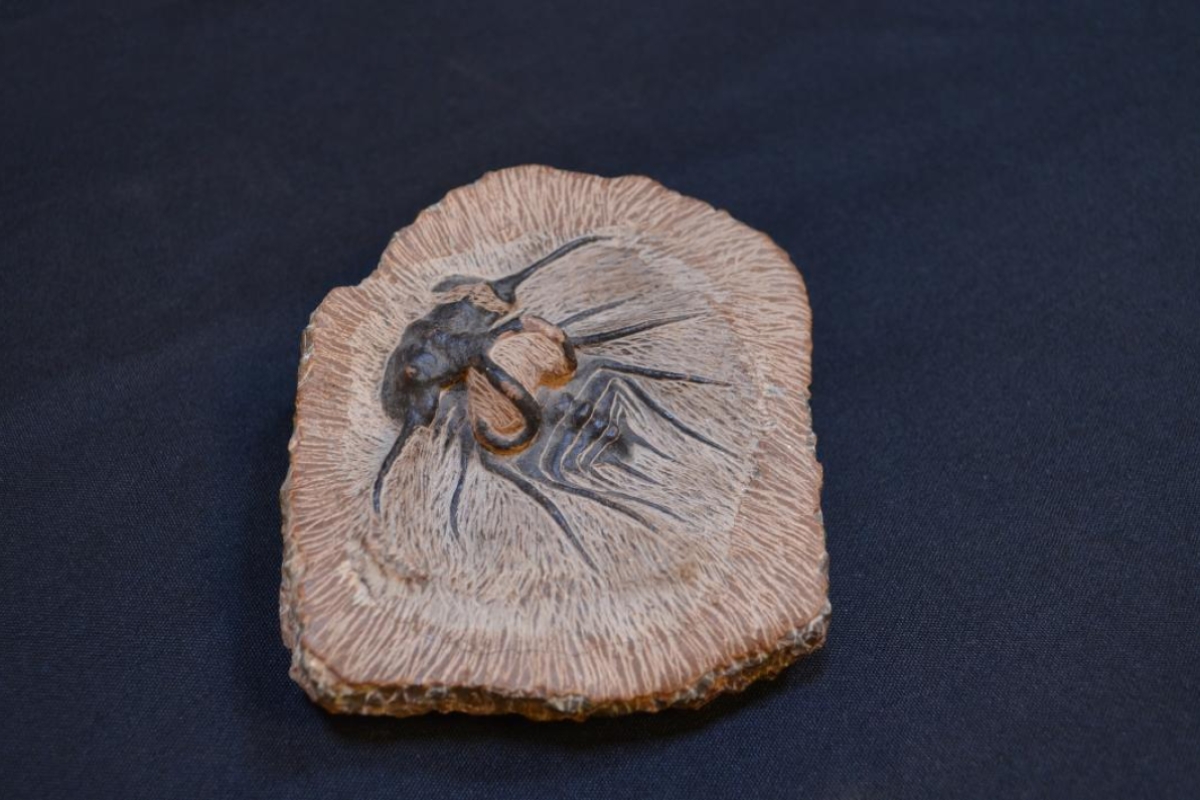ASU paleobotanist shares love of fossil plants on National Fossil Day

Fossilized in limestone, this sunfish was found in the Green River near Kemmerer, Wyoming. It is from the Eocene era and is roughly 50 million years old.
When you think about fossils, dinosaurs or other ancient animals may come to mind.
But for paleobotanist Kathleen Pigg, plants were always far more interesting.
Growing up in Ohio, she spent her days surrounded by plants as she walked through the woods with her mother. Pigg said this nurtured her deep love of plants, but she never had any particular plans to study plant fossils.
“The fossil part kind of came secondarily,” said Pigg, professor with Arizona State University’s School of Life Sciences. “Some paleontologists are little kids who loved fossils, but I was a little kid who loved plants.”
Pigg ended up studying plant fossils after a class at Ohio State University led to working in a faculty member’s lab as an undergraduate researcher.
“You know how it is when you’re young and you start doing things in someone’s lab,” Pigg said. “Nowadays everyone has undergraduates in their labs doing projects, but it wasn’t all that common back in the '70s.”
Since that time, Pigg has yet to stop studying ancient plants. Throughout her career, she has focused on a number of different historical eras ranging from 15 million to 500 million years ago.
While paleobotanists often stick to one era, Pigg’s experience across many eras has given her a broad view of how plants have changed throughout history. With that specialty, she focuses on the evolutionary history, biogeographic distribution and the adaptations of many plant groups. By looking at how plants have adapted to different climates and moved around the world, Pigg’s research can help show how modern plants might be affected by global warming.
“The Earth was really warm during the Eocene era, so you had things like palm trees in Canada,” Kathleen said. “The reason that’s scientifically important is because it gives us a lot of information about how these plant groups evolved and moved around the planet.”
Despite never intending to spend her life studying fossils, the appeal of it quickly grew on her.
“There’s nothing better in the world than cracking open a rock and finding something,” Pigg said. “You’re the first person who has seen that fossil in 15 million years. People think archeology is cool, but that’s only thousands of years old. Fossils are millions of years old.”
Pigg has had many opportunities to experience that joy firsthand at one of the fossil floors where she conducts research. At the Stonerose Interpretive Center and Eocene Fossil Site in Republic, Washington, anyone can rent a pickaxe, learn how to find fossils and spend the day scouring the lakebed for samples.
Guests can keep up to three fossils per visit. Onsite staff members examine every sample in case rare or important pieces are dug up.
The important thing, Pigg said, is that such opportunities grow the paleontology community and allow enthusiasts to get hands-on experience. It also helps researchers such as her, to find the important fossils among the thousands of common ones.
Aside from her research, Pigg manages the plant fossils at ASU’s Natural History Collection. Most of the collection was inherited from emeritus professor James Canright. It contains everything from well-preserved wood anatomy to fossilized pollen.
National Fossil Day is set aside for paleontologists across the country to share the importance of studying fossils.
“The thing about a collection is you never quite know why it might be useful,” Pigg said. “People look at the organic material off of leaves that were collected 400 years ago. When someone was collecting pretty flowers in the 1700s, they had no idea what DNA was. They had no idea that anyone would be able to get the DNA out of it and learn something.”
Since the advent of digitization, less active collections are far more accessible than ever before, according to Pigg, making digital scans of the fossils an important initiative.
Still, she said it’s important to have physical fossils and for people to see them — which is why she brought “Cruisin’ the Fossil Freeway” to ASU. The art exhibit, created by artist Ray Troll and paleontologist Kirk Johnson, brings together the best of the ASU Natural History Collections fossils and Troll’s fossil-inspired artwork to explore questions about evolution, extinction and early life on Earth.
The exhibit is open to the public on Tuesdays and Thursdays from 9 a.m. to 5 p.m. until Dec. 15. For more information, visit the School of Life Sciences website.
More Science and technology
Largest genetic chimpanzee study unveils how they’ve adapted to multiple habitats and disease
Chimpanzees are humans' closest living relatives, sharing about 98% of our DNA. Because of this, scientists can learn more about…

Beyond the 'Dragon Arc': Unveiling a treasure trove of hidden stars
NASA's James Webb Space Telescope (JWST) has set a new milestone: capturing images of over 40 individual stars in a galaxy so…

ASU selected as home and partner for CHIPS and Science Act-funded national facility for semiconductor advanced packaging
Following a week where a spirited effort by the Sun Devil football team captured the nation’s attention in the Peach Bowl, it is…







